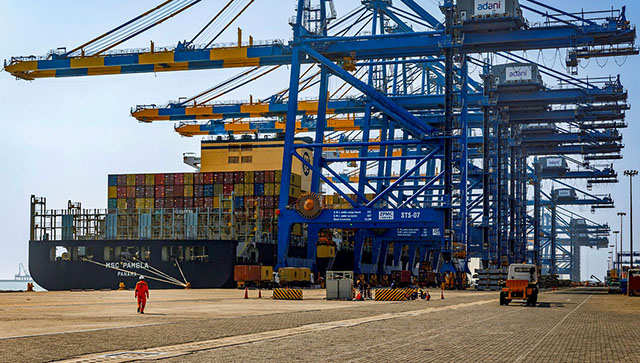Last month, the National Anti-profiteering Authority (NAA) ceased to exist, as its functions were taken over by the Competition Commission of India (CCI). Just as the eternal soul lives forever, merely changing bodies as time passes, the spirit of dirigisme or statism is also permanent; it lives on, the sermons to reforms by politicians notwithstanding. Worse, we have been inured so much to the prevalence and preponderance of statist monstrosities that we often tend to ignore monstrously, to use a woke term, microaggressions. The NAA’s resurrection is one of them. Set up in 2017, its objective was to ensure that the consumer benefited from the reduction in the rate of the Central goods and services tax. The exercise militated against the very spirit of liberalisation, for economists believe that prices are best determined by the market; politicians and bureaucrats should have nothing to do with them. The NAA was supposedly given a two-year term. But then, as Milton Friedman said, nothing is so permanent as a temporary government programme. The NAA got another extension, of two years, in 2019. And then again. Last year in November, perhaps the powers that be found it awkward to keep giving extensions to a body that was supposed to be temporary. So they transferred the NAA’s functions to the CCI. Everything about the NAA is wrong—from its conception to its life and times to its demise and rebirth. For there is no such thing as profiteering. Anyone running a business either earns profits (also called earnings) or incurs losses. It is, however, only businesspersons making huge profits who are lambasted and lampooned for being ‘filthy rich’, fat cats, etc. Celebrities—be it sportspersons or film stars—are rarely, if ever, accused of ‘exploiting’ workers or ‘fleecing customers.’ Diverse social, cultural and religious factors are responsible for the anti-business attitudes prevalent, especially in India. A detailed description of all factors is beyond the scope of a media article, but a point needs to be made here. A bunch of officers should not be blamed for such frequent blunders; the entire system must be blamed. To be precise, it is the deep pink state that is responsible for the blunders that have become the bane of wealth creators. The deep pink state comprises pinkish policy and decision-makers who are entrenched in the system. The prevalence of socialism for decades has created this abomination. Generations of political, intellectual, and media elites have endowed the pink Leviathan with some kind of artificial intelligence, gradually transforming it into a deep state. Unsurprisingly, the institutionalized mindset is genetically anti-business. Irrespective of the thinking of the prime minister, be it Manmohan Singh or Narendra Modi, and the predilection of top pro-reforms economic advisors (as evident in Survey after Economic Survey), the deep pink state continues to spring up unpleasant surprises for businesspersons. It could be price control (as in the healthcare sector) or continued state interference in the economy (as in agriculture). In fact, the pink Leviathan is always fecund, one of its progeny being the NAA. Four observations can be made here. First, prices come down because of healthy competition, technological upgrades, and efficient businesses, not government controls. It is the invisible hand of market forces that made goods and services affordable, not highhanded meddling by bureaucrats. Fiats, rules, and regulations, which are used to bring down prices, inevitably and invariably lead to shortages, black marketing, and corruption. Second, deep pink state operatives refuse to learn anything from the past. Telephone bills in our country are down because of competition, not government action. Third, meddlesome ways of government at various levels are disincentivizing investment. As per the data of the Department for Promotion of Industry and Internal Trade, actual industrial investment came down in the last calendar year to Rs 250,064 crore from Rs 347,978 crore in 2021. Foreign direct investment (FDI) inflows into the country also declined 16 per cent to $71 billion (on a gross basis) during the last fiscal. This is despite the Modi government’s well-publicised programmes like Make in India and production-linked incentives, reduction of the corporate tax rates, and heavy investment in infrastructure. There is something rotten in the statecraft of India, and that rot arises from the creative machinations of the deep pink state. This brings us to the fourth point: the constant creation of interventionist measures. This is reminiscent of a cosmological view called steady-state theory. Encyclopedia Britannica defines it as “a view that the universe is always expanding but maintaining a constant average density, with matter being continuously created to form new stars and galaxies at the same rate that old ones become unobservable as a consequence of their increasing distance and velocity of recession.” While this theory is no longer favoured by astronomers, its analogue in India’s political economy still holds sway: the deep pink state continuously generates anti-business rules and regulations. The NAA’s resurrection underlines this fact. The author is a freelance journalist. Views expressed are personal. Read all the Latest News , Trending News , Cricket News , Bollywood News , India News and Entertainment News here. Follow us on Facebook, Twitter and Instagram.
Generations of political, intellectual, and media elites have endowed the pink Leviathan with some kind of artificial intelligence, gradually transforming it into a deep state
Advertisement
End of Article


)

)
)
)
)
)
)
)
)



